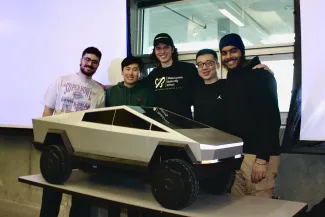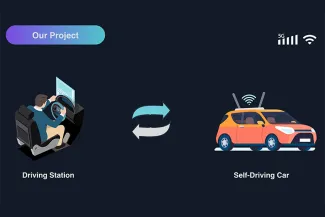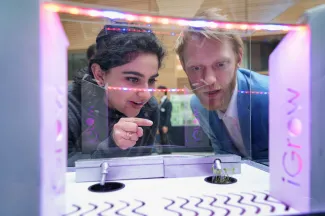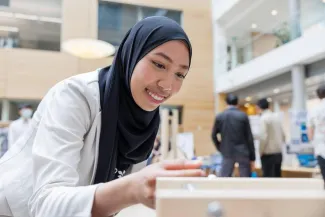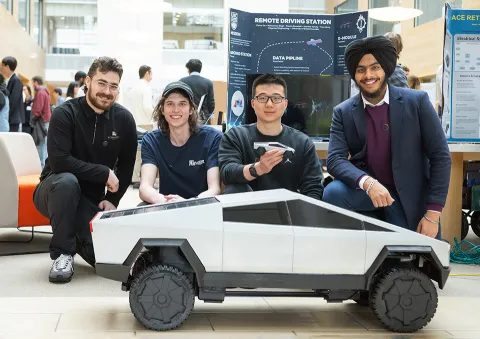
Parker Gu, Tony Jiang, Rowan Zawadski, Mankanwar Singh and Harrison Narvey
- Degree:
- Bachelor of Applied Science
- Program:
- Campus: Vancouver
Our process
This complex project integrated mechanical, electrical and software engineering disciplines. It involved constructing a scaled-down model of the Cybertruck, developing a remote driving station, and creating a user interface.
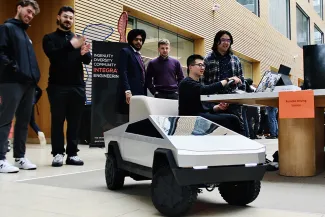
We designed and 3D-printed a 1:4 scale Cybertruck to serve as our test vehicle, using a custom-fitted chassis on a repurposed kid's ride-on car. To simulate real driving conditions, our vehicle included essential features such as headlights, steering and turn signals. It collected real-time images through front and rear USB cameras and used a GPS-based telemetry system for location and speed data. We also equipped the vehicle with radar on both sides for blind spot detection.
All data collected by our car was sent to our driving station via an onboard computer installed inside the vehicle, connected through Wi-Fi/cellular.

The driving station included a Logitech G29 Driving Force Racing Wheel and Floor Pedals, along with a laptop featuring a dual-monitor setup (one for GPS navigation and one for the dashboard and camera feeds).
The user interface (UI) was specifically designed for the driver, providing a comprehensive and intuitive control system. The real-time camera feed was crucial for the UI, offering immediate visual feedback and enhancing the overall driving experience. Our remote system operated ROS2 (Robot Operating System) as its backend, ensuring low-latency communication between the car and the driving station.
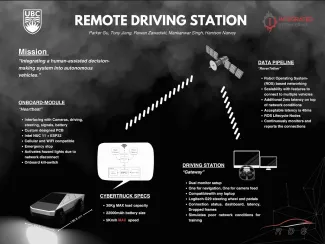
What we’re most proud of
Our final prototype successfully demonstrated the reliability of our remote system, operating smoothly throughout Design and Innovation Day without encountering any technical issues. Each member of our team brought sophisticated expertise in their respective fields, demonstrating dedication to the project with high-quality finishes.
Furthermore, our mechanical team implemented a systematic car modeling process, employing 3D printing technology to construct the scaled-down Cybertruck.
